Matador Network's Blog, page 2262
May 15, 2014
65 delicious noodle dishes [pics]
Growing up Japanese, and in a household of foodies, I was privy to a multitude of noodles my friends had never heard of. I was eating udon before I could say “udon” (or, rather, when everything I said sounded like I was trying to say “udon”). Imagine trying to explain the difference between “Hong Kong style,” traditional chow mein, and lo mein to kids who thought I was eating leftover worms for lunch.
Yet, I was still a noodle novice, having come late to phở and pad thai, and just dipping my toes into the deep waters of cold-noodle dishes like soba. At boarding school, and later in college, I had to get creative to turn my Costco flat of Top Ramen into anything other than dehydrated noodles and a flavor packet (not quite the experimentation I expected from my teenage years). While I did find some clever ways to reappropriate those materials, I could never have conceived of so many different established recipes to prepare these floppy, delicious dishes.
Here are 65 noodle dishes, sorted by country of origin.
BURMA (MYANMAR)
1. Baik kut kyee kaik (also Myeik katkyikaik)

(via)
Consisting of flat rice noodles stir-fried in soy sauce, with bean sprouts, peas, pepper, onion, shrimp, and squid. This dish is usually very spicy.
2. Mohinga (မုန့်ဟင်းခါး)

(via)
This rice-noodle and fish soup is considered by many to be the national dish of Myanmar. Though usually eaten for breakfast, it can be found anywhere at any time of day. While the recipe varies from region to region, the foundation of the soup is chickpea flour, lemongrass, garlic, onion, ginger, fish paste, fish sauce, catfish, and banana-tree stem, poured over rice vermicelli with lime and spicy chili.
3. Kyay oh

(via)
Traditionally served in a copper pot, this soup is made with rice noodles and marinated meatballs in a pork, chicken, or fish broth (though pork is the most popular). There’s also a ‘dry’ version, made with sesame oil instead of broth.
4. Ohn no khao swè

(via)
This dish consists of wheat noodles in a curried chicken and coconut-milk broth. It’s often served with crispy fried bean fritters and noodles, raw onion, and lime with hard-boiled egg and fish sauce.
CAMBODIA
5. Kuy teav

(via)
A noodle soup typically eaten for breakfast. It’s heavily flavored with lime, garlic, and pepper and often features crunchy greens like sprouts, basil, and lettuce.
CHINA
6. Wonton noodles (云吞面)

(via)
A very popular Cantonese dish with noodles served in hot broth with shrimp wontons. There’s a very strict way of serving this dish so the noodles don’t overcook: The spoon goes in the bottom of the bowl, then the shrimp wontons, with the noodles on top.
7. Liangpi (凉皮)

(via)
Originating from the Shaanxi province, this dish is made from wheat or rice flour and served cold. The name literally translates to “cold skin” and consists of a pancake-like paste that’s steamed and cut into long strips, then dressed with hot chili oil, garlic, and sometimes vinegar or sesame paste.
8. Banmian (板麵)

(via)
A Chinese fish soup with thick-cut egg noodles. Usually made with spinach and mushrooms, topped with crunchy anchovies and served with a raw egg (to be cracked into the hot soup to cook).
9. Dandan noodles (担担面)

(via)
A traditional Sichuan dish comprising spicy sauce, pickled vegetables, chili oil, Sichuan pepper, and minced pork served over noodles — sometimes sesame paste or peanut butter is added, but usually only in the Americanized version of the dish.
10. Ants climbing a tree (蚂蚁上树)

(via)
A classic Sichuan dish consisting of ground meat cooked in a spicy sauce and poured over cellophane noodles. The bits of meat cling to the noodles, which is where the dish gets its ever so slightly off-putting name.
11. Crossing the bridge noodles (过桥米线)

(via)
This famous dish from the Yunnan province is sort of a DIY project, served as a bowl of hot broth with all the ingredients on the side. There are a few theories behind the origin of the name: One says that it refers to the process of assembling the soup; another tells a story of a woman who devised the separation of broth and ingredients to keep the soup hot as she crossed a bridge to bring dinner to her husband.
12. Zhajiangmian (炸酱面)

(via)
Literally translated to “fried sauce noodles,” this dish consists of thick wheat noodles topped with specially prepared ground pork. The meat is stir-fried in a fermented soybean paste called zhajiang, which is very salty. The dish is often topped with shredded veggies like carrots, cucumbers, and cabbage to add a crunch.
13. Luosifen (螺蛳粉)

(via)
A specialty from the city of Liuzhou in Southern China, luosifen is a dish of rice noodles boiled in a heavily spiced river-snail and pork broth, with pickled and fresh vegetables, peanuts, and chili peppers. Its name literally means “snail rice noodle.”
14. Beef chow fun (干炒牛河)

(via)
Ho fun is a type of wide rice noodle that’s stir-fried quickly with bean sprouts, onion, soy sauce, and beef and has become a popular dish not only in China and Hong Kong but throughout the rest of the world as well.
15. Taiwanese beef noodle soup (牛肉麵)

(via)
This dish is pretty self-explanatory. Often spicy, it’s made with beef shanks and a variety of vegetables.
16. Chow mein (originally Chāu-mèing, 炒面)

(via)
This dish is so popular worldwide there are variations throughout North and South America, the Caribbean, Europe, and Asia. The only thing tying them all together is the fact that they’re stir-fried noodles — otherwise, they’re served with every kind of meat, vegetable, and garnish imaginable.
17. Lo mein (撈麵)

(via)
Wheat flour noodles, prepared as a soup but separated out before serving. Usually prepared with vegetables and some kind of seafood or meat. Like chow mein, lo mein’s gained global popularity, but the Americanized version is stir-fried, rather than cooked as a soup and strained.
18. Hot dry noodles (Reganmian, 热干面)

(via)
A Wuhan breakfast staple, often served in carts from 5am until midnight. Noodles called jianmian are prepared a little differently for this dish: cooked, then mixed with oils, dried, and scalded in boiled water before serving with various condiments, including soy sauce, pickled vegetables, chili oil, and sesame paste.
19. Dan zai noodles (擔仔麵)

(via)
Another Taiwanese dish, very popular in Tainan, consisting of a shrimp-based broth with shrimp, pork, garlic, and coriander. It’s served with a variety of garnishes, and restaurants in the region intensely guard their secret recipes.
20. Shanghai fried noodles

(via)
More of a Westernized dish than most on this list, Shanghai fried noodles are thick, chewy noodles stir-fried with beef cutlets, onions, and bok choy.
INDONESIA
21. Mie aceh

(via)
This dish is a specialty of the Acehnese people of Indonesia. A very spicy curry soup, it’s filled with thick yellow noodles and slices of goat, beef, or seafood and served either as a soup or strained after cooking and served dry.
22. Mie kering (also Makassar dry noodle)

(via)
This dried noodle dish is served in a thick gravy with chicken, shrimp, squid, liver, and mushrooms. Historically, the recipe for Mie kering is attributed to Ang Kho Tjao, of Chinese descent.
23. Mi rebus

(via)
The name of this dish literally translates to “boiled noodles.” It’s a little more interesting than that, however; yellow egg noodles are served in a curry potato gravy with hard-boiled egg, tofu, limes, onions, and bean sprouts.
24. Mie celor

(via)
This noodle soup from Palembang is made in a coconut and dried-shrimp broth, served with hard-boiled egg and crispy vegetables like celery and bean sprouts. The name “celor” comes from the South Sumatran Malay dialect and refers to showering the ingredients in boiled water (which is how the noodles are prepared before they’re simmered in the broth).
25. Soto ayam

(via)
This spicy chicken soup contains either slices of pressed rice cakes or vermicelli noodles and plenty of turmeric to give it its distinctive yellow color. It also contains slices of fried potato, hard-boiled egg, and shallots.
26. Mie goreng

(via)
Indonesia’s favorite street noodles, this dish is stir-fried with meatballs or seafood and veggies. Traditionally it’s spicy, so seek it out if you’re looking for a kick!
27. Bakmi ayam (colloquially Mie ayam)

(via)
This very popular dish is served in restaurants and street carts in Indonesian cities. It consists of yellow wheat noodles topped with soy sauce, mushrooms, and diced chicken, all in a chicken broth soup.
28. Mie koclok

(via)
The name of this dish means ‘shaking,’ which is a reference to its unique method of preparation. Egg noodles are served in a thick coconut milk and corn-flour sauce with chicken, cabbage, bean sprouts, hard-boiled egg, and onions. Mie koclok hails from West Java, where it’s very popular with the locals.
JAPAN
29. Ramen (ラーメン)

(via)
Oh, ramen. When Americans think of noodles, they likely think of ramen. Wheat-based noodles are prepared in meat or seafood broth and topped with things like pork belly, seaweed, green onions, or egg. Most regions of Japan have their own versions of the dish.
30. Yakisoba (焼きそば)

(via)
Soba are thin noodles, similar to Chinese chow mein, but traditionally made with buckwheat flour (though more modern variants are made with the same flour as ramen, seasoned with something similar to oyster sauce). The noodles are usually fried with bite-sized pieces of pork, vegetables, and a special yakisoba sauce.
31. Champon (ちゃんぽん)

(via)
Champon originated in Nagasaki but has Chinese influences. The soup base is made from chicken and pork bones, and then pork, seafood, and veggies (fried in lard) are added to the broth, along with special ramen noodles. This dish varies by season, based on the ingredients available at the time.
32. Hōtō (ほうとう)

(via)
The noodles for this dish are similar to udon noodles, but they’re flat — and the Japanese actually differentiate between the two because these are prepared more like dumplings. The noodles are stewed in miso soup, along with vegetables like onions, potatoes, taro, carrots, cabbage, and mushrooms. Some claim the broth is best when pumpkin is boiled in it before the soup is prepared.
33. Sara udon (皿うどん)

(via)
With a name that literally translates to “plate noodles,” this obviously isn’t a soup dish. Sara udon is thick wheat-based noodles topped with stir-fried cabbage, bean sprouts, and other veggies, as well as some kind of meat or seafood (usually pork, shrimp, or squid).
34. Sōmen salad (素麺サラダ)

(via)
This cold noodle salad is based around the sōmen noodle — a very, very thin wheat-flour noodle. The salad has three main components: the noodles, the vinegar dressing, and some sort of garnish (usually shredded vegetables, sliced meat, or egg).
See 31 more ridiculously delicious noodle dishes on page 2 >>
The post 65 ridiculously delicious Asian noodle dishes appeared first on Matador Network.

May 14, 2014
27 brilliant white sand beaches
GREAT BEACHES CAN BE FOUND all over Earth’s coastal areas. Some are considered optimal for surfing, while others are preferred for snorkeling, fishing, or even parasailing, but ask anyone looking to kick back under an over-sized umbrella on a picture-perfect beach and they’ll often tell you they require a few key features.
What are they, you ask? Cold drinks, hot sun, clear (warm) water, and walkable white sand. Check out this collection of 35 images of the most picturesque white sand beaches on the planet. 

1
Navagio Beach (Zakynthos, Greece)
Located off the coast of the Ionian island Zakynthos, Navagio is a white sand beach on which the smuggling ship Panagiotis rests. The ship allegedly wrecked while carrying contraband cigarettes.
(via)

2
Anse Source D'Argent (La Digue, Seychelles)
Covered in granite boulders, Anse Source D'Argent is one of the most popular beaches in the Republic of Seychelles. A reef surrounding the beach calms the shallow waters, making them suitable for children and weak swimmers.
(via)

3
Tulum Beach (Tulum, Mexico)
Situated directly in front of the Tulum ruins, Tulum's white sand beach attracts tourists in droves. More secluded stretches of uninterrupted beach can be found to the south.
(via)
Intermission
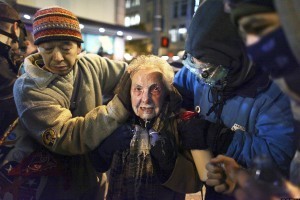
29 powerful images from protests worldwide
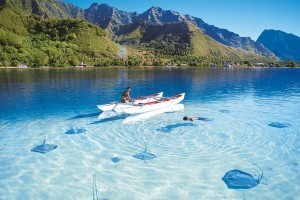
35 places to swim in the world’s clearest water [PICs]
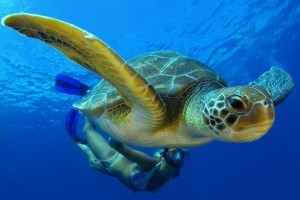
25 reasons to visit the Canary Islands [pics]

4
Manafaru (Haa Alif Atoll, Maldives)
One of the northernmost islands of the Maldives, Manafaru is home to the Beach House resort, comprising 83 villas, half of which are situated above the water.
(via)

5
West Railay Beach (Railay, Thailand)
Known for the limestone karsts which surround the waters, West Railay Beach is the usual haunt of those itching for a swim. Long-tail boats can be hired to transport visitors to nearby Ao Nang.
(via)

6
Luskentyre Beach (Isle of Harris, Scotland)
Not your typical white sand beach. Wild horses can often be found roaming the dunes of Luskentyre Beach on the Isle of Harris.
(via)

7
Whitehaven Beach (Whitsunday Island, Australia)
Whitehaven Beach is widely known as one of the best white sand beaches in the world. The sand derives its color from its composition, which is 98% silica.
()

8
Titikaveka Beach (Rarotonga, Cook Islands)
Titikaveka Beach, located in the coastal village of Titikaveka, is popular for its snorkeling due to the depth of the lagoon. The reef at Titikaveka Beach, which calms the waters, is further away than most beaches on Rarotonga.
(via)

9
El Nido (Palawan, Philippines)
Home to numerous resorts built on the white sand beaches of the islands, the municipality of El Nido is well known for its flora and fauna. Five types of forest, 100 species of coral, and 10 threatened species of birds can be found on the islands and in their waters.
(via)
Intermission
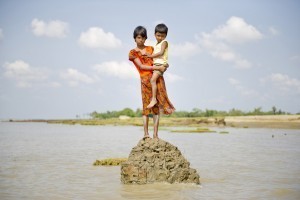
16 astonishing images of islands that could disappear in the next century
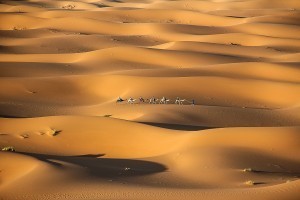
30 images of Morocco we can’t stop looking at

11 images to remind us of the need for activism around the world

10
Waimea Bay Beach Park (Oahu, Hawaii)
Waimea Bay Beach Park is located on the North Shore of Oahu. Swimming in the clear waters is suitable in the summer, when the waters are typically calmer (bring your board the rest of the year).
(via)

11
Matira Beach (Bora Bora, French Polynesia)
Bora Bora, which holds the nickname "the romantic island," is home to Matira Beach, often considered one of the best white sand beaches on the planet. It's a mile-long stretch at the southern end of the island.
(via)

12
Puka Beach (Boracay, Philippines)
Puka Beach, which also goes by the name Yapak Beach, earned its name due to the amount of puka shells that pepper the sand. The unobstructed view from the beach allows visitors to watch the sunset daily.
(via)

13
Crane Beach (Long Bay, Barbados)
Crane Beach's soft sand contains hues of white and pink. It rests in front of the Crane Residential Resort, from which it earns its name.
(via)

14
Boulders Beach (Cape Town, South Africa)
Boulders Beach, located in the Cape Peninsula, also goes by the name Boulders Bay. The colony of African Penguins which lives there makes the location a frequent tourist destination.
(via)

15
Lanikai Beach (Oahu, Hawaii)
Located on the windward coast of Oahu in Kailau, Lanikai Beach is a half-mile stretch of white sand beach that's often crowded on weekends during tourist season. It can only be reached through public beach access paths.
(
via)
Intermission

35 images of Costa Rica we can’t stop looking at
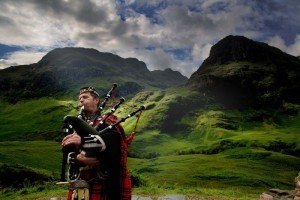
30 images of Scotland we can’t stop looking at
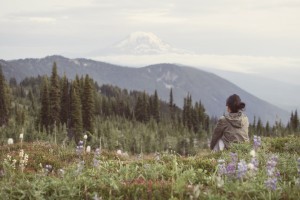
22 epic images of the Pacific Crest Trail we’re excited to see on the big screen in Wild

16
Maya Bay (Phi Phi Leh, Thailand)
Maya Bay, popularized by the filming of the movie The Beach, is a bay widely known for its excellent diving due to the clear waters and white sand beaches. Palong Bay and Loh Samah are two of the most popular dive sites.
(via)

17
Los Roques Archipelago (Venezuela)
Made up of roughly 350 islands, islets, and cays, Los Roques is well known for its snorkeling and diving due to the coral reef that runs through the shallow waters of the islands. In 2010, it was estimated that roughly 1,800 people permanently inhabited the archipelago.
(via)

18
Trunk Bay (St. John, US Virgin Islands)
Trunk Bay is one of the most popular white sand beaches on St. John. It's the only national park beach on the island that requires an entrance fee.
(via)

19
Bai Dai Beach (Phu Quoc, Vietnam)
20km from Nha Trang, Bai Dai (which translates to "Long Beach") attracts visitors in droves to enjoy the excellent swimming. Post-swim, tourists typically visit the nearby restaurants for drinks and fresh seafood.
(via)

20
Wineglass Bay (Tasmania, Australia)
Part of Freycinet National Park, Wineglass Bay is best known for its white sand beaches and sapphire waters. There are small campsites, and hiking, sailing, and fishing are popular activities in the area.
(via)

21
Cable Beach (Broome, Western Australia)
Cable Beach is named for the installation of a telegraph cable that spans from Broome to Java. The appearance of a 12ft saltwater crocodile caused a brief shutdown of the beach in February of 2014.
(via)

22
The Baths (Virgin Gorda, British Virgin Islands)
At the Baths, large granite boulders create tidal pools and tunnels that access the sea. One of the national parks of the British Virgin Islands, the Baths are most popular for snorkeling and swimming.
(via)

23
West Bay Beach (Roatan, Honduras)
One of the most popular in Roatan, the white sand beach of West Bay was a well-kept secret for years. The reef, which can be directly accessed offshore, is part of the world's second-largest barrier reef system.
(via)

24
Isla Contoy (Quintana Roo, Mexico)
With an area of 3.17 sq km, the tiny island of Isla Contoy is considered one of the most important nesting places for sea birds in the Mexican Caribbean.
(via)

25
Little Corn Island (Corn Islands, Nicaragua)
Little Corn Island, the smaller of the Corn Islands (as the name suggests), has no motorized vehicles. It's reached via a ferry from Big Corn Island.
(via)

26
Calo des Moro (Mallorca, Spain)
Surrounded by pine-covered cliffs, Calo des Moro is a tiny beach on Mallorca. Roughly 30 metres long by 10-20 metres wide, the white sand beach gets crowded on weekends during the peak summer season.
(via)

27
Four Mile Beach (Queensland, Australia)
Four Mile Beach, situated in Port Douglas, is popular with kitesurfers during the winter. Sea wasps live in the water from November to June, so care must be taken when swimming.
(via)
The post 27 brilliant images of white sand beaches worldwide appeared first on Matador Network.

Here's how tsunamis work [vid]
Tsunamis are among the most destructive natural disasters in the world. Here in the US, we’re much more used to hurricanes and tornadoes, but two of the worst disasters in the past decade have been tsunamis. The 2004 tsunami in Southeast Asia killed around 200,000 people, and the 2011 tsunami in the Pacific caused the Fukushima nuclear power plant disaster, possibly the worst nuclear disaster in history. But tsunamis themselves are relatively misunderstood by the general public, often being referred to as “tidal waves,” despite the fact they have nothing to do with tides.
In this handy animation by TED on YouTube, Alex Gendler explains how tsunamis work, and how we can best prepare for them so we can avoid catastrophes like the 2004 tsunami or the Fukushima disaster. It turns out, on an individual level, the best option is to simply run away — preferably inland and to higher ground. But you need to be warned to be able to do that, which means international warning systems are an important element of tsunami preparation as well. 
The post Here’s how tsunamis work (and how you can avoid them) appeared first on Matador Network.

Why I love you, Gringos

Photo: kris krüg
You have this sense of humor.
You don’t mind me calling you gringos (right?) or laughing at your “no problemo,” “un otro,” or “soy embarazado.” Your self esteem is so high it allows you to laugh at yourselves unlike any other culture I know.
You have the greatest breakfast.
Bacon. Sunday bacon. Sweet bacon. (Vegan bacon doesn’t qualify, sorry.) There’s nothing else to say.
You have this innocence.
Growing up in a culture where almost everything said — and heard — may have a second, third, or fourth sense, I appreciate your ingenuousness. Although I have to admit it hurts my pícaro heart when my supposedly funny comments aren’t even noticed. And I definitely can’t laugh about that!
You’re always on time.
Well, not that much in the South I have to say, but it’s true that, in the US, time’s as valuable as money.
You’re concerned about my employment.
“So, what do you do for a living?” is usually one of the first questions my fellow Americans ask me at any party, while I’m munching on my apple pie with cream. I find that so…wait…do I really love that?
You have this ability to get organized and help others.
Whether calling a nurse-in to protest against a store that gave a mother a hard time for nursing in public, or supporting a local family going through hard times, or creating a community garden, you’re always ready to help and do it in a very professional way. Kudos!
You have an openness that welcomes others.
Of course there are a couple of (million) assholes, but I only got welcoming, loving words when I came to the US as an immigrant, and I still get interesting questions about my country. “Is Argentina close to Russia?” “So you guys speak…Portuguese?” Don’t worry, I know you’re just trying to learn more about me and my country!
You hold personal freedom as a virtue.
I appreciate the freedom to get to choose how to educate my children and what to do with my body. I didn’t have those chances in my home country. And if one day I need to smoke pot, I can just go to Colorado or Washington and buy some organic kush.
You place a boundless emphasis on comfort.
I used to feel so inadequate in Argentina, where those awfully beautiful women dress up and wear high heels for almost everything. In my adopted hometown of Asheville, nobody looks twice if you wear pajamas and mud boots while shopping at Trader Joe’s.
You have true diversity.
Or should I say we have true diversity? When I took my pledge to become an American citizen seven years ago in Seattle, people from 15 countries were there, and 18 different languages were spoken. You’ve created a nation that welcomes and celebrates diversity. The best news: You can live here your entire life without having to eat American food (except breakfast).
You’ve shared so many good times with me.
My students, trying passionately to learn my language. The lovely Southerners giving me smiles and making me feel closer to my culture with their warmth. My lovely friends around the country. And the amazing gringos of my bicultural family. 
The post Why I love you, Gringos appeared first on Matador Network.

15 things US youth need to thrive
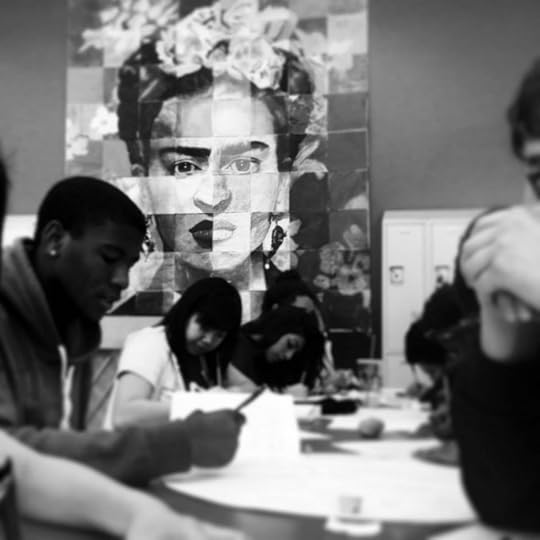
Photo: Marcela Berrios
I’VE BEEN AN EDUCATOR for over 10 years. I’ve worked with thousands of teenagers in classrooms, communities, and after-school programs. Being a tutor, coach, mentor, and teacher has been challenging, yet incredibly rewarding. One of the biggest lessons I’ve learned is that with all the talk about education reform, charter vs. public school, Common Core Standards, and curricula that best prepare our students to thrive in this world, we can’t forget to ask our students themselves what they believe they need to thrive — what their worlds look like.
I am now working to build an amazing nonprofit organization called Global Glimpse that uses travel to teach high-school students from diverse socioeconomic backgrounds about the world. This spring I asked our alumni, who spent 3 weeks immersed in a developing country last summer, one simple question: “What do you believe you need to thrive in America?” Their answers are unexpected and beautiful.
What truly motivates and inspires me is that they learned what they need to thrive in America by traveling outside of this country.
1. FAMILY
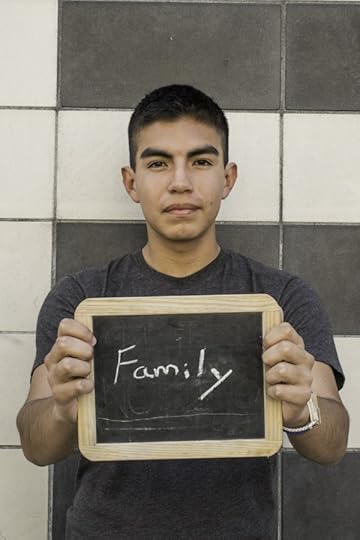
Photo: Isabel Foley
“I left my mother and emigrated from Peru when I was 8 years old. Traveling to Nicaragua reconnected me to my struggle and reminded me why my mother sacrificed. My mom told me that money does not buy happiness. She says to make the most of your life, you have to experience what it is like living in both worlds, rich and poor, to realize the only thing that is valuable is your heart.”
2. DIVERSITY

Photo: Jorge Novoa
This young man spent three weeks living and learning in another country with 20 other peers from different schools, neighborhoods, socioeconomic backgrounds, religions, and races. “I learned that being around different people is a crucial part of a person’s development. We need others to push us to look at ourselves and the world differently.”
3. APPRECIATION

Photo: Isabel Foley
“My most memorable moment from my Global Glimpse experience in the Dominican Republic was meeting a Dominican pastor who has spent his entire life supporting Haitian immigrants who are exploited in the bateyes (sugarcane plantations). This experience showed me how to appreciate the gifts I have been given and give to others.”
4. UNITY
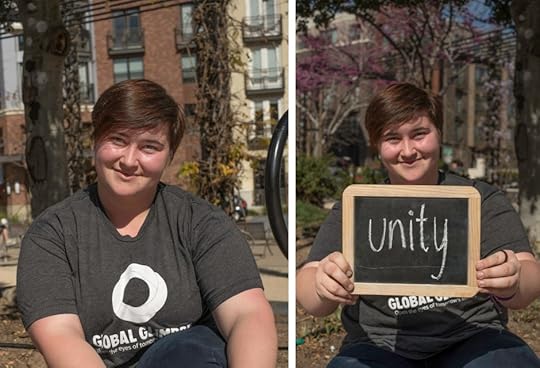
Photo: Isabel Foley
“Alone we can do so little; together we can do so much. I experienced the power of unity when we worked together to deliver our service-learning project in partnership with a local elementary school and their teachers, students, and families.”
5. EDUCATION

Photo: Isabel Foley
“So many of us in the US take education for granted. I met an incredible mother in Nicaragua who said she had never been to a day of school in her life, and yet all she wanted for her son and daughter was education. I couldn’t believe how deeply someone who had never been educated believed education could make her children’s lives better.”
6. IMMERSION

Photo: Isabel Foley
“The only way to truly feel is to experience things firsthand. The simplest of memories remain present in your dreams, thoughts, and future decisions. The opportunity to be amazed is a rare one that should be cherished. Immersion is the most valuable form of education.”
7. HOPE

Photo: Jorge Novoa
“The people of Nicaragua showed me hope. I’ll be the first in my family to graduate from college this spring, and I’m the youngest person to have tried to run for San Jose City Council. I ran because I want to fight for what my city truly needs — community organization, crime prevention, education reform, and economic development. I will continue to have hope and continue to fight for others.”
8. LEADERSHIP

Photo: Jorge Novoa
“I learned that young people all over the world have a critical eye and a hopeful heart. We need that combination of critical eye and hopeful heart to bring change. That is the kind of leader I am going to be — that I am.”
9. HUMILITY

Photo: Isabel Foley
“In Nicaragua I learned that we need to be humble. If you do something for someone, do it out of love, not pity.”
10. CONNECTION

Photo: Isabel Foley
“What I mean by ‘connect’ is being able to understand and feel what others are feeling. To truly be an advocate for someone else, you need to walk in their shoes.”
11. COMMUNITY

Photo: Jorge Novoa
“I experienced an incredible sense of community with the people in Nicaragua. People spent time outside of their homes with their families, friends, and neighbors. People supported each other. We need more of that in the US.”
12. OPPORTUNITY
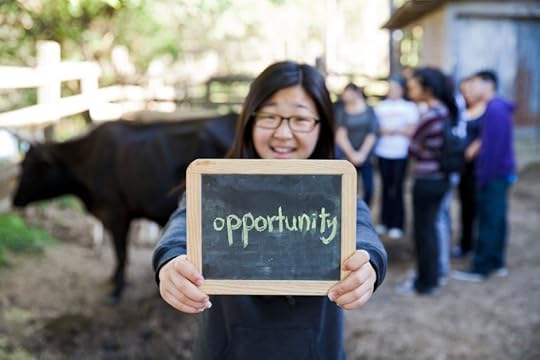
Photo: Jorge Novoa
Studies show that two-thirds of the achievement gap between lower- and higher-income youth can be explained by unequal access to summer learning opportunities. As a result, low-income youth are less likely to graduate from high school, enter college, and gain upward mobility in the global economy (Alexander et al., 2007).
13. AN OPEN MIND

Photo: Isabel Foley
“Because a scared mind gives us nothing, and an open mind gives us the world.”
14. SOCIOECONOMIC MOBILITY

Photo: Isabel Foley
A landmark new study led by a group at Harvard suggest that children growing up in America today are just as likely — no more, no less — to climb the economic ladder as children born more than half a century ago. If you are growing up poor today, you have the same odds of staying poor in adulthood as your grandparents did.
15. GIVING

Photo: Isabel Foley
“I learned that to truly thrive in America we must all rise together.”
About Global Glimpse
Global Glimpse works to inspire America’s next generation to become responsible and successful global citizens through after-school programming and transformative travel in the developing world. We currently partner with 45 public high schools in the Bay Area and New York to serve over 600 majority low-income students annually. Our school-based program develops global competence, civic engagement, youth leadership, and college readiness, inspiring and empowering youth to become agents of change in their local communities and in the greater global community. This year we provided over $1 million in travel scholarships for our low-income students.
Learn more and get involved at www.GlobalGlimpse.org. 
The post 15 things youth need to thrive in America (and 1 unexpected way to get there) appeared first on Matador Network.

What New Yorkers really mean

Photp: Jorge Quinteros
I was born on the Upper West Side, at a time in New York when things were still crummy, but just starting to turn around. Even since moving to Long Island, the city is very much a part of who I am, and its culture vibrates through me as I trundle into Midtown Manhattan on the LIRR.
New Yorkers are stereotyped as over-aggressive, passive-aggressive, and everywhere in between — probably because of the linguistic diversity many cultures bring with them when they move here. While these aren’t representative of every citizen within New York City’s 8.3 million, for those that have lived here long enough, we can all interpret the layers hidden beneath the surface of what is actually said.
Transportation
What they say: Should we cab it?
What they mean: I’m way to drunk/lazy to deal with the subway right now.
What they say: The G is the worst.
What they mean: The G is my personal nightmare. Of all the MTA hells in the world, I had to live off the G train.
What they say: Take the 1 local train downtown to 42nd Street, then take the shuttle across town to Grand Central Station, then take the 6 train uptown to 96th Street…
What they mean: WHY ARE THERE NO SUBWAY LINES THAT RUN EAST TO WEST ABOVE 42ND STREET, DAMMIT?!
What they say: Hey do you have a car?
What they mean: I’m changing apartments and I don’t want to hire a moving company.
OR…
I want to go to IKEA.
IKEA is in Red Hook, Brooklyn, and is 23 minutes’ walking-distance from the nearest subway station.

Photo: Harold Navarro
Dining
What they say: What are you having for lunch?
What they mean: I’m in the mood for Chipotle / Pret-A-Manger / Blossom Du Jour and yes, I’m spending an extra $2 to get guacamole / Pure coconut water / gluten-free bread.
Nothing says New York like a $12 lunch.
What they say: Want to grab some drinks?
What they mean: Let’s find the bar with the cheapest Happy Hour and be blackout drunk by 7pm.
What they say: Let’s get brunch!
What they mean: Let’s find the restaurant that serves the cheapest bottomless brunch and get blackout drunk by 2pm.
My pick: Epstein’s.
What they say: Yeah, I met such-and-such celebrity one time…
What they mean: I saw such-and-such celebrity on the subway one time, but they got off at the next stop before I got the chance to covertly Instagram them.
OR…
I stood outside the stage door at a Broadway show and waited for them to autograph my playbill.
Geography
What they say: I don’t do Manhattan.
What they mean: I’m too poor to hang out in Manhattan.
And you probably live in Brooklyn.
What they say: I don’t do Brooklyn.
What they mean: If I see another fucking hipster, I’m going to shove their pork pie hat down their throat.
And you probably live in Manhattan.
What they say: I don’t do Queens.
What they mean: I have no idea how to get to Queens, or what there is to do there.
You most likely live in Brooklyn, and don’t realize that Queens is right above you.
What they say: You live on Long Island? That’s so far…
What they mean: I know nothing about the geography of Long Island, except that really rich people have houses in the Hamptons.
Just for reference, there is a stretch of land between the end of Queens and where the Hamptons begin.

Photo: David Tan
Careers
What they say: I’m an actor/actress.
What they mean: I’m a waiter/waitress.
Career waiters make far too much money to bother with acting.
What they say: I’m in finance.
What they mean: I slave away 65 hours a week at a hedge fund, but I’m rich as helllll because of it.
What they say: I’m a fashion designer.
What they mean: I work at Forever 21.
What they say: I’m a blogger / DJ / artist.
What they mean: I’m unemployed.
Not to say that bloggers / DJs / artists don’t make any money, but competition in NYC is so fierce, the cash is probably not very steady.
What they say: I’m a bike messenger.
What they mean: I sell drugs.
Housing
What they say: I share an apartment / have a roommate.
What they mean: I pay over $1,000 to live in a 5×7 room, and there are always dirty dishes in the sink.
This is how most New Yorkers start out.
What they say: I live in a studio.
What they mean: I have my own place, but it’s super small, and I pay over $2,000 for it.
Picture the living room of your house. Now picture the living room with a bed, kitchen, and an IKEA coffee table in it. Yeah, that small.
What they say: I live in a junior one bedroom.
What they mean: I live in a studio with French doors, or some kind of accordion room divider, that makes it feel like it’s a one bedroom. You shouldn’t crash at my place, though, because you’ll definitely hear me having sex.
What they say: I live in Manhattan.
What they mean: My apartment is a shoebox, but I earn enough money to pay my rent, and still feed and clothe myself.
Congratulations, you’re living the dream!
What they say: I live on the Upper East Side (said with confidence).
What they mean: My family is riiiiiiccccchhh.
Maybe you went to prep school. Or maybe you are some distant relative of the Astors. Or maybe you are a trust fund baby.
What they say: I live on the Upper East Side… (said with a slight rising intonation).
What they mean: I live on First Avenue, and it takes me ten blocks to get to the nearest subway station.
What they say: I live in the East Village / Lower East Side.
What they mean: I go to NYU and share an apartment with five other people, and I’m only allowed to cook vegan food in their kitchen.
The East Village and Alphabet City used to be complete shitholes in the ’90s, but gentrification cleared that right up!
What they say: Slight laughter
What they mean: I’ve lived here my whole life, probably somewhere super posh like Park Avenue, Tribeca, or the West Village, but I don’t want to make you feel bad.
What they say: I live in East Williamsburg.
What they mean: I live in Bushwick.
“East Williamsburg” is a term real estate brokers use to swindle you into living in an apartment next to a crack den, but within close proximity to actual Williamsburg.
What they say: I live off of the L.
What they mean: I live so far into Bushwick I’m embarrassed to tell you what subway station I get off at.
It’s likely past Myrtle/Wyckoff, or actually somewhere on the J/M line.
What they say: I live in the Bronx.
What they mean: Don’t fuck with me.
What they say: I live in Queens.
What they mean: My apartment is in someone else’s house. Like, a legit house. With a backyard and everything. But I’m not allowed to use it.
What they say: I live in Staten Island.
What they mean: You will never see me in any other borough, unless I’m there for work, or someone’s bachelor party.

Photo: Dirk Knight
New Yorkisms
What they say: You’ve probably never heard about this place. / No one knows about this place.
What they mean: I read about this place in Time Out New York, and thought it’d be cool to see it for myself.
There is nothing truly “undiscovered” in New York — trust me.
What they say: I hate tourists.
What they mean: Times Square was definitely my favorite place in NYC before I moved here.
What they say: A slight grunt after bumping into you
What they mean: I’m sorry for bumping into you! I’m just really in a rush.
What they say: Complete silence after bumping into you
What they mean: I’m not sorry for bumping into you at all.
What they say: I’m from New York City.
What they mean: I moved here X amount of years ago, and think it’s cooler to say I’m from New York than where I’m actually from.
What they say: New York City isn’t what it used to be.
What they mean: I haven’t actually lived here long enough to make that assessment, but the place that only sells tiramisu just shut down, and now I’m bummed.
What they say: I need to get out of the city.
What they mean: I’ve reached my breaking point, but let’s be real here — I’m not going anywhere.
What they say: Only in New York.
What they mean: Watching a homeless man pee in the corner of a subway car makes me feel really uncomfortable, but I can’t let on about it because then I won’t seem like a “true” New Yorker.
What they say: I hate New York!
What they mean: I really do love New York, but I’m so jaded / stone-hearted that sometimes my feelings are all sorts of cray.
What they say: I love New York!
What they mean: I really do love it here, but it hasn’t been easy. But I also know, I’m super lucky. 
The post What New Yorkers say vs. what they really mean appeared first on Matador Network.

Dizzying GoPro footage of world
TRAVELING THE WORLD for 600 days straight is pretty impressive, and I’m sure that Alex Chacon has a lot to say about it, on and off camera. His unique video, which captures 360° Degree “selfies” in over 36 countries, is definitely an interesting idea. But halfway through, I got super dizzy from the slightly spinny effects, and had to pause for a bit.
The quality of the video is pretty good, and definitely gives you a sense of all the places Chacon has traveled to. I’m inspired to visit some of his locations in person, but maybe stay in one place while doing so. 
The post This GoPro footage of the world will make you dizzy appeared first on Matador Network.

39 natural wonders of the world
Humanity’s love of travel list-making did not start with the internet age. The famous Seven Wonders of the Ancient World was considered a guidebook for the 1st and 2nd Century BCE tourist working their way around the Greek Empire. Unfortunately for modern travelers, those ancient wonders are gone (with the exception of the Pyramids at Giza). So we’ve gotten into the habit of creating new lists of the “Seven Wonders of the World.”
Because this is obviously going to be a hotly debated topic, and because we don’t want to make a definitive list of anything, the “Seven Wonders of the World” phenomenon has been split into tons of different categories. There are the “Seven Wonders of the Industrial World,” which include the Brooklyn Bridge and the London Sewer System; there are the “Seven Wonders of the Solar System,” which include the rings of Saturn and Olympus Mons on Mars (the tallest known mountain in the solar system); there are USA Today’s “New Seven Wonders,” which include the Internet and Potala Palace in Lhasa, Tibet.
My favorite lists, however, are those that rank the “Seven Natural Wonders of the World.” Like every other list, there’s no definitive agreement as to which ones are the wonders, but all that means for you as the traveler is there’s more you need to check off. So count up how many of these natural wonders of the world you’ve been to, and share your total in the comments!
The New7Wonders list
Back in 2000, the New7Wonders Foundation (apparently still on a millenium-induced high that made them think spaces between words were no longer relevant) decided to reboot the Seven Wonders concept so that the places on the list were actually still standing. The list was chosen via telephone poll, so it’s hardly scientific (as if there could be such a thing), but it was popular enough that they decided in 2007 to do it again for the “New7Wonders of Nature.” Here’s their final list:
The Amazon River and Rainforest
The Amazon rainforest stretches out over 9 countries, and is the largest and most biodiverse forest in the world.
(via)
Jeju Island
Jeju Island is a volcanic island and province of South Korea that sits to the south of the peninsula, between South Korea and Japan.
(via)
Ha Long Bay
Ha Long Bay in northern Vietnam is a popular tourist destination thanks to its gorgeous limestone karsts and its floating fishing village.
(via)
Iguazu Falls
The famous Iguazu Falls straddle the Iguazu River on the border between Argentina and Brazil.
(via)
Puerto Princesa Underground River
The Puerto Princesa Underground River is on the Philippine Island of Palawan, and leads into a cave that you can take boat tours through.
(via)
Komodo Island
Komodo Island is part of the Indonesian Archipelago, and is famous for being the home of the Komodo dragon.
(via)
Table Mountain

Table Mountain is the famous landmark that towers over Cape Town, South Africa. There are some great views of the city from the top (accessible via hiking trail and cableway).
(via)
The CNN list
Though it pains me to give any credit to CNN whatsoever, this list sits a little bit better with me than the voter-influenced New7Wonders version — I can’t get behind a list that doesn’t include the Grand Canyon or the Great Barrier Reef. Again, this is by no means authoritative or scientific, but here’s the CNN list:
The Great Barrier Reef
Australia’s famous, gigantic barrier reef is sadly at risk of being destroyed by climate change, overfishing, and tourism.
(via)
The Grand Canyon

The famous, massive canyon cut by the Colorado River through Arizona is one of the few wonders that belongs on every iteration of this list.
(via)
Harbor of Rio de Janeiro
Brazil’s most famous city fills in the spaces between the surrounding mountains and the ocean, making it one of the most beautiful cities on Earth. And above it all, it’s watched over by the Christ the Redeemer statue — one of the regularly cited manmade wonders of the world.
(via)
Mount Everest

For the sake of counting these, if you’ve seen Mount Everest (in the Himalayas on the border of Nepal and Tibet), you’ve been to it. You don’t have to have made it to the summit.
(via)
Aurora
The aurora (aurora borealis or “Northern Lights” in the north, aurora australis in the south), is caused by the collision of solar winds with Earth’s magnetospheres, and can be viewed from pretty much anywhere within certain latitudes, depending on the visibility and severity of the geomagnetic storms.
(via)
Victoria Falls
Victoria Falls — on the Zambezi River between Zimbabwe and Zambia — are the largest waterfalls by volume in the world.
(via)
Paricutin Volcano
The Paricutin Volcano gets on most lists just for the sheer bizarreness of its history. It was a cornfield in 1943, and then, in the span of a year, grew to a height of 1,102 feet. The villages around it are buried in lava, and only a belltower juts from the rock.
(via)
The runners-up
Again, the lists above are by no means definitive, and the world’s far too big and wonderful to limit the chosen wonders to seven. Also, there are some glaring omissions: No Yellowstone? No Sahara? Some of the listings feel more like the result of high-pressure tourism campaigns than the legitimate best things the natural world has to offer. So it’s worth our time to go into some of the ones that aren’t included in the finalist lists, but should be considered “wonders” anyway. Here they are, excluding the Great Barrier Reef and the Grand Canyon, which we’ve already covered:
Bu Tinah shoals
Bu Tinah, off the coast of Abu Dhabi, is a coral archipelago that is totally closed to the public. As such, it’s the one you’re the least likely to have been to on this list.
(via)
The Dead Sea
The Dead Sea, on the border of Jordan and Israel, is one of the saltiest bodies of water in the world. So salty that you can famously float in it, and that no macroscopic organisms can survive in it.
(via)
Jeita Grotto
The Jeita Grotto is a series of caves in Lebanon that was inhabited in prehistoric times, and is now a major cultural symbol of the nation.
(via)
Kilimanjaro
Kilimanjaro is Africa’s tallest mountain, and — as it’s a dormant volcano — is the tallest free-standing mountain in the world.
(via)
Masurian Lake District
This well-connected system of lakes (with over 2,000) in Poland is a popular European vacation spot.
(via)
Sundarbans
The Sundarbans — mostly in Bangladesh, though partially in India — is the world’s largest tidal mangrove forest, and is famous for being one of the largest Bengal Tiger reserves.
(via)
Maldives

Kudos to the Maldives for getting their entire country on the list. The Maldives are a series of coral atolls in the Indian Ocean, and, if climate change raises sea levels by even a little bit, they will no longer exist — the nation’s highest point is only 7 feet and 10 inches off the water.
(via)
Angel Falls
The world’s tallest uninterrupted waterfall (at 3,212 feet) is in the jungles of Venezuela.
(via)
Bay of Fundy
Canada’s Bay of Fundy is famous for having the highest tidal ranges in the world, with a maximum of an incredible 71 feet.
(via)
The Black Forest
Germany’s famous Black Forest gets on this list for their ham alone.
(via)
The Cliffs of Moher
Western Ireland’s Cliffs of Moher are one of the country’s most popular tourist destinations.
(via)
El Yunque
El Yunque is the only tropical rainforest in the US National Forest System — find it just a short drive east of San Juan, Puerto Rico.
(via)
The Galapagos Islands
The Galapagos Islands are perhaps most famous for their biological diversity, which informed Charles Darwin’s groundbreaking theory of evolution by natural selection.
(via)
Matterhorn
The Matterhorn, between Italy and Switzerland, is considered one of the most difficult mountains to climb in the world.
(via)
Milford Sound
This sound on New Zealand’s South Island was called “the eighth wonder of the world” by Rudyard Kipling.
(via)
Mud volcanoes of Azerbaijan
Azerbaijan has the most mud volcanoes in the world. So they have that going for them, which is nice.
(via)
Uluru

Australia’s Uluru (or “Ayer’s Rock”), is probably the continent’s most recognizable natural icon. You’re no doubt familiar with its form as seen from ground level, so enjoy the aerial shot above.
(via)
Vesuvius
As impressive as the Italian volcano Vesuvius itself (near Naples) is its violent history, which included the destruction and burying of Pompeii in 79 AD.
(via)
Yushan
Yushan is Taiwan’s tallest mountain, and is surrounded by a gorgeous national park. (via)
My picks
There are a few obvious choices which didn’t make any of the lists above, so I’m throwing them in myself. Hey, I’m the writer. I have that power.
Yellowstone
Yellowstone obviously has to be on here. The Yellowstone Caldera and National Park feature some of the most stunning landscapes in the world. Pictured above is the Grand Prismatic Spring.
(via)
The Sahara Desert
The Sahara is the world’s hottest desert, and its largest behind the polar deserts. It spans 11 countries and an entire continent.
(via)
Salar de Uyuni
Bolivia’s salt flat (the world’s largest) is a favorite spot of travel photographers. It’s easy to see why.
(via)
Pando
Pando (“The Trembling Giant”) is a tree colony in Utah that is actually a single organism. It is both the heaviest thing living, at 6,600 tons, and is also possibly the oldest living organism, at 80,000 years old.
(via)
The Giant’s Causeway
The Giant’s Causeway is a group of basalt columns in Northern Ireland that are believed to be about 50 million years old.
(via)
Zhangjiajie
The stunning sandstone pillars of Zhangjiajie’s Wulingyuan Scenic and Historic Interest Area looks like it belongs on Avatar’s Pandora rather than Earth. 
(via)
The post How many of these 39 natural wonders of the world have you been to? appeared first on Matador Network.

May 13, 2014
Digging a hole to China just got REAL
WHEN I WAS a kid, my friends and I would go to the beach and try to dig a hole to China. Four hours of work resulted in a huge sand pit, but barely scratching the surface between New York and Beijing.
Now it is rumored that Chinese engineers are planning to create an underground tunnel that would connect China, Russia, and the United States. Trains would run through these tunnels to create a new form of intercontinental infrastructure. According to an article in the Washington Post, “The proposed “China-Russia-Canada-America” line would be some 8,000 miles long, 1,800 miles longer than the Trans-Siberian railroad.”
This sort of freaks me out, for a few reasons. One, did anyone on the US side officially “approve” of this tunnel having an outlet somewhere in Alaska? Why is no one making a bigger deal about this? Also, the current Trans-Siberian Rail Road takes about a week to get through, and that doesn’t include stopping and getting out to look around. So theoretically, whoever rides on this new rail system would be underground for a full week?
Maybe it’s because I’m claustrophobic, but that sounds like a complete nightmare. I think they should funnel the funding into something more practical, like a teleporation device. 
(H/T Washington Post)
The post Digging a hole to China just got REAL appeared first on Matador Network.

On LGBT rights in the Philippines

Photo: sea turtle
She asked the audience to choose between Whitney Houston and Mariah Carey, tossing high-pitched giggles at the half-full bar before the stage as she flipped her hair.
“I can do anything, baby,” she squealed, kissing at a solo foreigner slumped behind a table, an empty bucket of San Miguel bottles in front of him. He just grinned up at her, drunk.
“I know what can make you less shy: Lady Gaga.”
We’d just wandered into this bar off the main drag in Puerto Princesa, on the Philippine island of Palawan, to get a much-needed beer after dinner. It was a particularly warm night and a beer or two would be just enough to lull us to sleep in the heavy evening air.
So we beelined for the beer menu and all of a sudden snapped to awareness as she launched into a full-blown rendition of “Bad Romance.” My jaw dropped. She wasn’t exactly hitting the notes, but she was belting the song out with all her soul. Our cheeks flushed from her energy and spirit…but well, that wasn’t all.
An Austrian I’d met at the hostel leaned over to me. “How does he…she do that? I mean hide it?”
My eyes scanned southward, and sure enough somewhere beneath where the slinky bandage dress gripped her hips was surely something taped back.
She caught me staring from behind the menu and with her most convincing bedroom eyes began to move off the stage toward me before stopping abruptly, tilting her head back in a passionate “Oh-oo-oh-oo-ohhhhhh…”
It was then her partner who strutted up to the stage, an extremely large and be-jeweled lady boy with a sequined dress and curled wig, harmonizing to the song. “Give it up for Tina!” he yelled over the song as Tina sang and sang and sang.
So we did. Hovering in the corners were gay and lesbian couples. A teenage birthday party had just casually filed in. We foreigners had, of course, sat directly in the middle of the room. But without fail, everyone raised their San Miguels to Tina.
“And I’m Marcos,” Tina’s aficionado announced as the song died down. “But you may as well call me Beyoncé.” Marcos flashed a toothy grin and heaved his body up onto a table, crossing his legs seductively.
I laughed, and Marcos locked eyes with me.
“Oh honey my jokes are short, but my penis is loooong.”
The amount of personality in the room doubled with the addition of Marcos, but Tina continued to dominate the stage. I’ve rarely seen someone with that much confidence, that much stamina to be exactly who she wanted to be. It sounds trite, but a part of me admired her.
They’re expected to be entertainers, artists, or in the creative professions, and their relationships are expected to mimic traditional gender roles. Their lifestyle is tolerated as long as they live up to these stereotypes.
At the end of set one (of who knows how many), we wandered back to the hostel to fall asleep to the hum of motorbikes and shrieking roosters. Tina bid us all adieu individually as we filed out (she’d learned all of our names by then), and we passed by a few more gay couples on their way in and a family with several small children.
“Certainly a family affair,” my friend said.
But the fact is that the Philippines, in general, is extremely tolerant of LGBT lifestyles (in fact, allegedly the most friendly in Asia), something that’s particularly surprising given how much the country’s ethos is shaped around Catholicism, patriarchy, conservativism, and tradition. A study by the Pew Research Center released in 2013 actually revealed that 73% of the Filipinos surveyed are of the opinion that “homosexuality should be accepted by society,” a figure far greater than the country’s Asian counterparts — Japan stood at 54%, Korea at 39%, and Malaysia at 9% — and even overtook much of the Western world (the United States came in at 60%). The results also completely go against the global trend that the importance of religion in people’s lives is negatively correlated with incidence of LGBT acceptance.
Of course, the country does still have its share of LGBT issues, particularly at the legal / governmental level — gays still cannot marry, for example, and hate crimes often go unrecorded because police lack the resources to report them as such. An anti-discrimination law has been lying dormant in Congress since 2011. Additionally, members of the LGBT community in the Philippines claim that while they experience acceptance from the larger population, it’s confined to a certain set of parameters. They’re expected to be entertainers, artists, or in the creative professions, and their relationships are expected to mimic traditional gender roles. Their lifestyle is tolerated as long as they live up to these stereotypes.
But even in countries where homosexuals are protected by the law, the larger battle is often cultivating a society that views homosexuality as an acceptable lifestyle, and one that is warming to continued liberal change. This social climate is growing in the Philippines, with a progressive spirit taking root. Recently, a Reproductive Health Bill was passed to enable women access to reproductive healthcare, and there’s also now a political party for LGBT Filipinos — both massive strides for a traditionally conservative, developing Southeast Asian country.
Gay celebrities, publicly visible entrepreneurs, professors, and politicians have a very dominant presence in the Philippines, helping to shape the nation’s attitude toward homosexuality, paired with increased education about sexual orientation. Even the national police have undergone LGBT sensitivity workshops.
LGBT members face discrimination globally, and it’s difficult to award accolades to a country for showing improvement when the reality is so many continue to face daily injustices for simply being themselves. But with tolerance growing and clear change laid out for the conservative, Catholic nation of the Philippines, there really are no social or anthropological excuses when it comes to human rights.
Hell, even I blushed a bit, head slightly cocked and grinning like crazy when Tina first belted out her melodies, but why shouldn’t a drag queen karaoke competition be just another performance the family can take in? At least if they go a bit lighter on the penis jokes. 
The post What a drag queen karaoke contest taught me about the Philippines appeared first on Matador Network.

Matador Network's Blog
- Matador Network's profile
- 6 followers





































